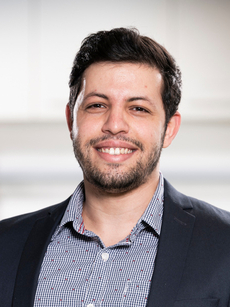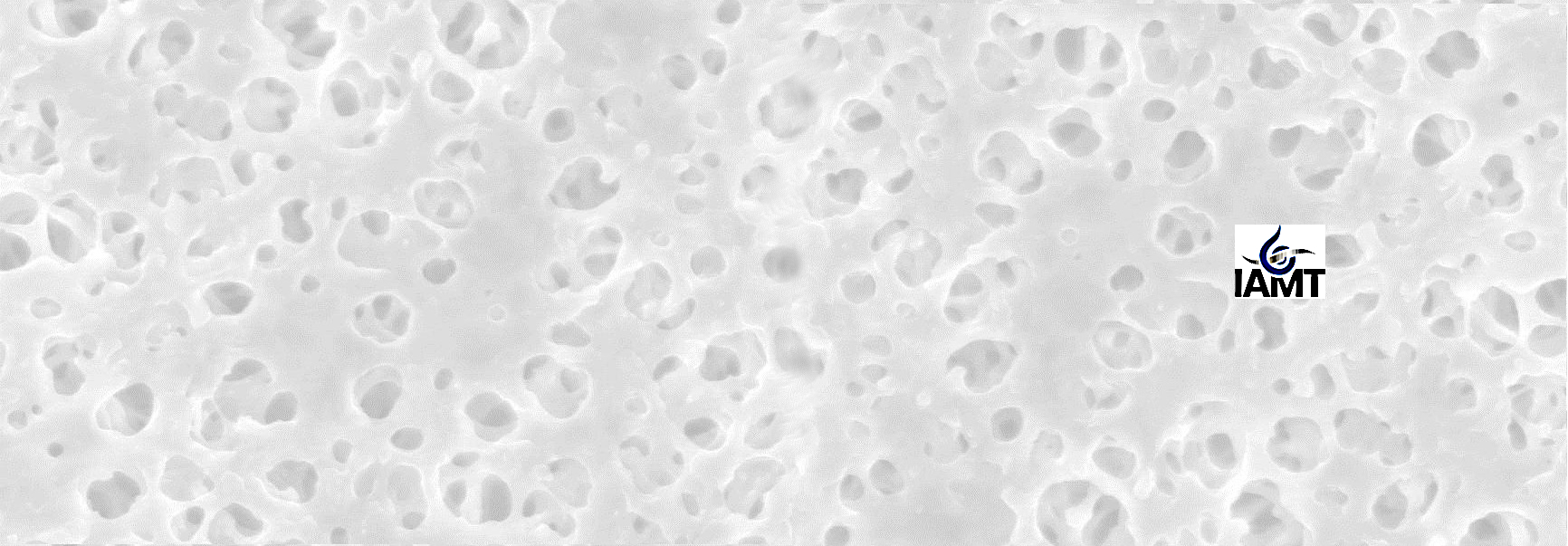
Dr. Youssef-Amine Boussouga
- Postdoctoral researcher
- Room: 215, Bldg. 352
- Phone: +49 721 608 24364
- youssef-amine boussouga ∂does-not-exist.kit edu
Karlsruhe Institute of Technology
Institute for Advanced Membrane Technology
Hermann-von-Helmholtz-Platz 1
76344 Eggenstein-Leopoldshafen
Germany
Lack access to safe water is nowadays a serious challenge which affects currently many developing countries. Not having safe water means constant fatal water-related diseases and a serious impact on economy. Once a source water is polluted by toxic elements (e.g. pesticides, uranium, arsenic, fluoride, etc.), effective and long-term water treatment processes must be applied. Nanofiltration (NF) is considered as a promising candidate to deal with water decontamination due to its interesting rejection characteristics and permeate flux. However, the energy consumption must be taken into account while using nanofiltration process, especially in case of use for drinking water supply in rural areas. In this case, it would be essential to adopt a treatment process powered by a renewable energy source; RE-NF.
Employment |
|
|
Since – 03/2019 |
PostDoc at Karlsruhe Institute of Technology (KIT), Germany, Institute for Advanced Membrane Technology (IAMT) |
|
03/2014 – 03/2018 |
Department of Chemistry, Faculty of Sciences and Technologies, Sidi Mohamed Ben Abdellah University, Fez, Morocco (Part-time lecturer) |
|
06/2016 – 11/2016 |
Department of Water Engineering, Faculty of Environmental Engineering, Vilnius Gediminas Technical University, Lithuania (Research Internship) |
|
|
|
Education |
|
|
2013 – 2018 |
Doctoral Degree in Environmental Science and Engineering, Faculty of Sciences and Technologies, Sidi Mohamed Ben Abdellah University, Fez, Morocco |
|
2011 – 2013 |
Master Degree in Materials and Process Engineering, Faculty of Sciences and Technologies, Sidi Mohamed Ben Abdellah University, Fez, Morocco |
|
2008 – 2011 |
Bachelor Degree in Chemical Engineering, Faculty of Sciences and Technologies, Sidi Mohamed Ben Abdellah University, Fez, Morocco |
|
|
|
Research Projects |
|
|
Nanofiltration systems and applications to removal of toxic trace elements in water with emphasis on pesticide and radioactive contamination. Modeling of mass transport through NF membranes. Renewable energy powered nanofiltration systems (RE-NF). |
Publications |
REFEREED JOURNAL PAPERS
Y.A. Boussouga, M. Bangalore Mohankumar, A. Gopalakrishnan, A. Welle, A. A.I. Schäfer, (2021) Removal of arsenic(III) via nanofiltration: contribution of organic matter interactions, Water Research, 201, 117315. https://doi.org/10.1016/j.watres.2021.117315
Y.A. Boussouga, H. Frey, H., A.I. Schäfer, (2021) Removal of arsenic(V) by nanofiltration: Impact of water salinity, pH and organic matter. Journal of Membrane Science, 618, 118452 https://doi.org/10.1016/j.memsci.2020.118631
Y.A. Boussouga, B.S. Richards, A.I. Schäfer, A.I., (2021) Renewable energy powered membrane technology: System resilience under solar irradiance fluctuations during the treatment of fluoride-rich natural waters by different nanofiltration/reverse osmosis membranes. Journal of Membrane Science, 617, 118452 https://doi.org/10.1016/j.memsci.2020.118452
M. Breida, W. Taanaoui, A. Karim, S. Alami Younssi, M. Ouammou, A. Aaddane, Y.A. Boussouga, A. Lhassani (2020) Comparison of the performance of inorganic ultrafiltration and organic nanofiltration membranes for removal of nitrate contamination of groundwater. Desalination and Water Treatmentm, 208, 17–31 https://doi.org/10.5004/dwt.2020.26444
M. Valentukeviciene, R. Zurauskiene, Y.A. Boussouga, (2019) Fluoride removal from groundwater by technological process optimization. Ecological Chemistry and Engineering S, 26 (1), 133-147 https://doi.org/10.1515/eces-2019-0010
Y.A. Boussouga, A. Lhassani, (2017) Modeling of fluoride retention in nanofiltration and reverse osmosis membranes for single and binary salt mixtures. Desalination and Water Treatment, 95, 162-169 https://doi.org/10.5004/dwt.2017.21502
A. Lhassani, H. Dach, Y.A. Boussouga, (2017) Brackish water desalination using nanofiltration membranes in Morocco. Desalination and Water Treatment, 83, 288-293 https://doi.org/10.5004/dwt.2017.21221
Y.A. Boussouga, A. Lhassani, (2017) Study of mass transfer mechanisms for reverse osmosis and nanofiltration membranes intended for desalination. Journal of Materials and Environmental Science, 8(3), 1128-1138 https://www.jmaterenvironsci.com/Document/vol8/vol8_N3/120-JMES-2490-Boussouga.pdf
BOOK CHAPTERS:
A. Imbrogno, Y.A. Boussouga, L.D. Nghiem, A.I. Schäfer (2021) Trace Contaminant Removal by Nanofiltration. In : A.I. Schäefer and A.G. Fane (eds) Nanofiltration – Principles, Applications, and New Materials, 2nd Edition: - Wiley-VCH https://doi.org/10.1002/9783527824984.ch19
E. Lichtfouse, N. Morin-Crini, C. Bradu, Y.A. Boussouga, M. Aliaskari, A.I. Schäfer, S. Das, L.D. Wilson, M. Ike, D. Inoue, M. Kuroda, S. Déon, P. Fievet, G. Crini (2021) Technologies to remove selenium from water and wastewater. In : Morin-Crini N., Lichtfouse E., Crini G. (eds) Emerging Contaminants Vol. 2. Environmental Chemistry for a Sustainable World, vol 66. Springer, Cham. https://doi.org/10.1007/978-3-030-69090-8_3
CONFERENCE PAPERS
Y.A. Boussouga, A. Lhassani, (2017) Performances of nanofiltration and low pressure reverse osmosis membranes for desalination: Characterization and modelling. IOP Conference Series: Materials Science and Engineering, 186(1), 012039 https://doi.org/10.1088/1757-899X/186/1/012039
Y.A. Boussouga, M. Valentukeviciene, R. Zurauskiene (2017) Research on fluoride removal from membranes rejected water. 10th International Conference on Environmental Engineering https://doi.org/10.3846/enviro.2017.071
Y.A. Boussouga, M. Valentukeviciene, R. Zurauskiene (2017) Investigating recycled filter media in order to remove fluoride compounds from groundwater. 10th International Conference on Environmental Engineering https://doi.org/10.3846/enviro.2017.072
R. Zurauskiene, M. Valentukeviciene, Y.A. Boussouga (2017) Filter medias from recycled concrete, properties investigated for sorption processes. 10th International Conference on Environmental Engineering https://doi.org/10.3846/enviro.2017.097
